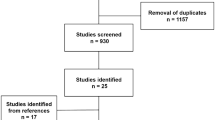Abstract
Aim
The purpose of this study was to describe the operative procedures and clinical outcomes of a new three-column internal fixation system with anatomical locking plates on the tibial plateau to treat complex three-column fractures of the tibial plateau.
Methods
From June 2011 to May 2015, 14 patients with complex three-column fractures of the tibial plateau were treated with reduction and internal fixation through an anterolateral approach combined with a posteromedial approach. The patients were randomly divided into two groups: a control group which included seven cases using common locking plates, and an experimental group which included seven cases with a new three-column internal fixation system with anatomical locking plates.
Results
The mean operation time of the control group was 280.7 ± 53.7 minutes, which was 215.0 ± 49.1 minutes in the experimental group. The mean intra-operative blood loss of the control group was 692.8 ± 183.5 ml, which was 471.4 ± 138.0 ml in the experimental group. The difference was statistically significant between the two groups above. The differences were not statistically significant between the following mean numbers of the two groups: Rasmussen score immediately after operation; active extension–flexion degrees of knee joint at three and 12 months post-operatively; tibial plateau varus angle (TPA) and posterior slope angle (PA) immediately after operation, at three and at 12 months post-operatively; HSS (The Hospital for Special Surgery) knee-rating score at 12 months post-operatively. All fractures healed.
Conclusion
A three-column internal fixation system with anatomical locking plates on tibial plateau is an effective and safe tool to treat complex three-column fractures of the tibial plateau and it is more convenient than the common plate.




Similar content being viewed by others
References
Luo CF, Sun H, Zhang B, Zeng BF (2010) Three-column fixation for complex tibial plateau fractures. J Orthop Trauma 24(11):683–692. doi:10.1097/BOT.0b013e3181d436f3
Marsh JL, Slongo TF, Agel J, Broderick JS, Creevey W, DeCoster TA, Prokuski L, Sirkin MS, Ziran B, Henley B, Audige L (2007) Fracture and dislocation classification compendium - 2007: Orthopaedic Trauma Association classification, database and outcomes committee. J Orthop Trauma 21(10 Suppl):S1–133
Schatzker J, McBroom R, Bruce D (1979) The tibial plateau fracture. The Toronto experience 1968–1975. Clin Orthop Relat Res 138:94–104
Zhai Q, Hu C, Luo C (2014) Multi-plate reconstruction for severe bicondylar tibial plateau fractures of young adults. Int Orthop 38(5):1031–1035. doi:10.1007/s00264-013-2211-z
He X, Ye P, Hu Y, Huang L, Zhang F, Liu G, Ruan Y, Luo C (2013) A posterior inverted L-shaped approach for the treatment of posterior bicondylar tibial plateau fractures. Arch Orthop Trauma Surg 133(1):23–28. doi:10.1007/s00402-012-1632-2
Jöckel JA, Erhardt J, Vincenti M, Reissig J, Hoffmann R, Husain B, Täger G, Partenheimer A, Lill H, Gebhard F, Röderer G (2014) Minimally invasive and open surgical treatment of proximal tibia fractures using a polyaxial locking plate system: a prospective multi-centre study. Int Orthop 37(4):701–8. doi:10.1007/s00264-013-1820-x
Kritsaneephaiboon A, Vaseenon T, Tangtrakulwanich B (2013) Minimally invasive plate osteosynthesis of distal tibial fracture using a posterolateral approach: a cadaveric study and preliminary report. Int Orthop 37(1):105–11. doi:10.1007/s00264-012-1712-5
Rasmussen PS (1973) Tibial condylar fractures. Impairment of knee joint stability as an indication for surgical treatment. J Bone Joint Surg Am 55(7):1331–1350
Luo CF, Koshino T, Takeuchi R, Saito T (2001) Reliability of the transepicondylar line as a parameter of femoral axial alignment. J Orthop Sci 6(5):373–377
Moreland JR, Bassett LW, Hanker GJ (1987) Radiographic analysis of the axial alignment of the lower extremity. J Bone Joint Surg Am 69(5):745–749
Dejour H, Bonnin M (1994) Tibial translation after anterior cruciate ligament rupture. Two radiological tests compared. J Bone Joint Surg Br 76(5):745–749
Insall JN, Ranawat CS, Aglietti P, Shine J (1976) A comparison of four models of total knee-replacement prostheses. J Bone Joint Surg Am 58(6):754–765
Sun H, Luo CF, Shi HP, Yang G, Zhong B, Zhang CQ, Zeng BF (2014) Morphological measurements of the posterior surface of the normal proximal tibia in a healthy Chinese population. Knee 21(2):567–572. doi:10.1016/j.knee.2012.10.025
Wicky S, Blaser PF, Blanc CH, Leyvraz PF, Schnyder P, Meuli RA (2000) Comparison between standard radiography and spiral CT with 3D reconstruction in the evaluation, classification and management of tibial plateau fractures. Eur Radiol 10(8):1227–1232. doi:10.1007/s003300000326
Author information
Authors and Affiliations
Corresponding author
Rights and permissions
About this article
Cite this article
Lin, W., Su, Y., Lin, C. et al. The application of a three-column internal fixation system with anatomical locking plates on comminuted fractures of the tibial plateau. International Orthopaedics (SICOT) 40, 1509–1514 (2016). https://doi.org/10.1007/s00264-015-2934-0
Received:
Accepted:
Published:
Issue Date:
DOI: https://doi.org/10.1007/s00264-015-2934-0




